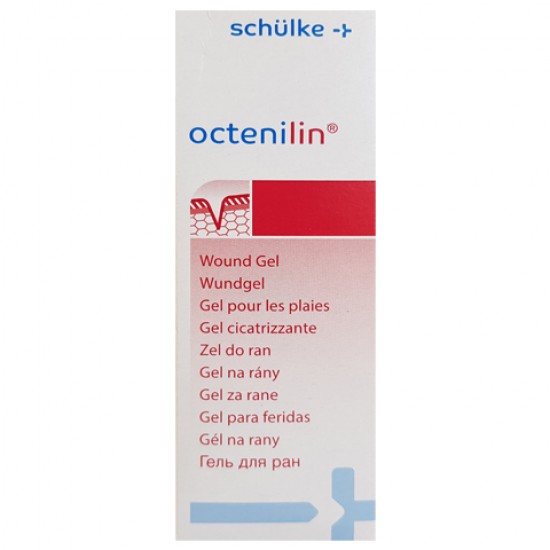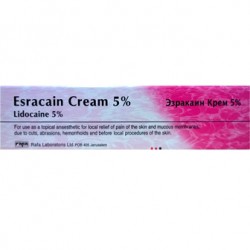Octenilin wound gel

A wound gel for moistening and cleaning of coated, contaminated and chronic skin wounds and burns. Helps to the natural healing process.
Active Ingredients
- OctenidineDihydrochloride
- Hydroxyethylcellulose
- Propylene Glycol
- Purified water
Indications
Octenilin wound gel can be used, for example:
- For moistening and cleansing of chronic skin wounds
- For preserving moisture of dressings and wound coverings
- For loosening caked coverings
- For helping the natural healing process
- For the care of thermal wounds (burns)
Instructions
Introductory remarks
Chronic skin wounds are almost always covered with exudate, a thick desquamated fibrin layer, necrotic tissue and cellular debris. These coverings provide good conditions for the growth not only of pathogens, but also of transient or resident pathogens of the skin flora, which may considerably delay natural wound healing. Careful wound cleansing and a moist wound environment is therefore required.
Only for external use on skin wounds.
Accompanying the debridement, the wound should always first be irrigated and cleansed so that easily detachable slough is already removed before continuing treatment of the wound with octeninlin wound gel.
Cover the wound completely with octenilinwound gel (1-5 mm). To cover or fill the wound, octenilinwound gel can be applied to poultices, gauzes, compresses and other absorbent materials or wound filling materials. Moistening the wound surface allows slough to be gently loosened and removed at the next dressing change.
Octenilin wound gel can remain on the wound until the next change of dressing. The frequency of dressing change depends on the nature of the wound and the amount of exudate and should be adapted to the current wound situation, but should be done after max. 3 days. If used with paraffin gauzes, the dressing is to be changed and the wound cleaned daily. The wound dressing should be chosen to suit the phase of wound healing. The secondary dressing should be chosen to ensure the gel does not dry out but so that the wound margins and the skin around the wound do not become macerated.
Patients with chronic wounds are often sensitive to temperature. Octenilin wound gel can be warmed to body temperature immediately before use.
To minimize the risk of introducing bacteria into the wound,thorough, extensive cleansing of the entire wound area with Octenilin wound irrigation solution is recommended.
When used with paraffin gauzes, the gauze may dry out and become difficult to remove. To prevent the paraffin gauze drying out, a dressing change with wound cleansing should be performed daily. The dressing can be saturated with Octenilin wound irrigation solution to facilitate removal.
Octenilin wound gel is suitable for repeated and long term use. The long term use of octenilinwound gel should be done under medical supervision.
The application of Octenilin wound gel is painless and is also well tolerated by persons with allergies.
Octenilin wound gel is non-irritating, non-sensitizing and pain-free in use, no tissue toxicity with inhibition of granulation and epithelisation. The good tissue tolerability of octenidine dihydrochloride has been demonstrated during many years of use and by clinical trials with octenisept including on chronic wounds.
Octenilin wound gel must be used within 6 weeks after opening the pack.
Use only intact and undamaged packs.
Protect the product against exposure to direct sunlight.
Warnings
Octenilin wound gel should not be used in patients with known or suspected allergy to one or more of the ingredients. If in doubt, consult a physician.
Do not use in combination with anionic surfactants or other wound cleansing soaps, ointments, oils, enzymes etc. Since this may adversely affect the preservative.
Do not use in combination with PVP-iodine, since this may cause discoloration and impair the antiseptic effect of the PVP-iodine.
To prevent possible tissue damage, Octenilin wound gel should not be used on hyaline cartilage, the eyes, ears, nose, urinary bladder and in the abdominal cavity!
Do not use for infusion or injection!
Not for oral use!
Please do not consider this information as an alternative to consulting your physician or pharmacist.
For further information on instructions for use, risks and side effects, please read the patient package insert and consult your doctor or pharmacist.
Read the patient package insert carefully before starting to take any medication.















